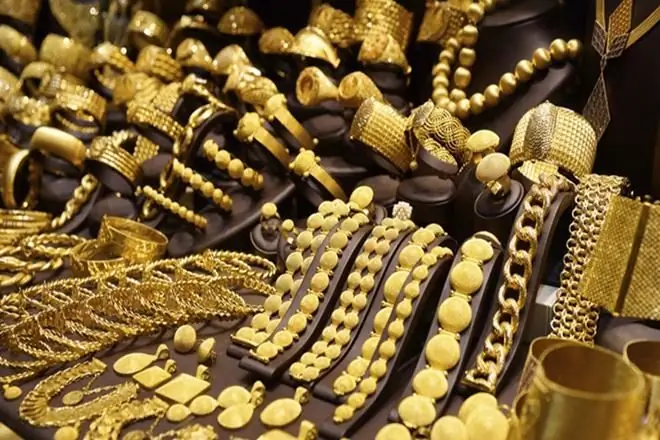2025 Author: Howard Calhoun | [email protected]. Last modified: 2025-01-24 13:10:43
The first association that arises in response to the question of what is sold in bottles is almost the same for everyone - wine.
Although Russians quite often mention vodka and beer, presenting a transparent glass bottle. Later, I remember a milk bottle, a 1.5-liter PET with lemonade, household chemicals in plastic, sunflower oil and a solvent.

Historical digression
To store and transport oils and wines, representatives of ancient civilizations used animal skins, containers hollowed out of wood, and ceramic vessels. The prototype of the modern bottle was, of course, the ancient Egyptian amphora: narrow-necked vertical vessels for carrying and storing both wine and beer, as well as oil.
Glass containers for storing liquids began to be used more than three thousand years ago (1700 BC). Glass containers were made from quartz paste. The process was complex, laborious and lengthy. And only when the glass blowing tube was invented (1-2century BC e.), the process became simpler. The Romans mastered the production of glass products, improving the shape and capacity of vessels.
After the 13th century, the products of Venetian craftsmen crossed the borders of the country and became in demand wherever there was a need to store and transport liquids, although they were quite fragile.
In the 17th century, the British patented a charcoal oven for firing. Glass products have become more durable, and dark bottles can be fired in the kiln. Winemakers immediately appreciated this and, accordingly, immediately patented the first wine bottle (1661, England).
Why glass?
The advantages of glass over clay are obvious: greater wear resistance, less brittleness, almost complete transparency. High transportability, provided that the manufacturing process was cheap (a machine for the production of glass containers was patented in 1901) became the dominant feature in the distribution of glass containers. Hygiene, ease of washing, any density and color - these advantages were added to the main ones, and glass containers became indispensable.
What are winemakers selling in glass bottles today?
The patented wine bottle hasn't changed much since the 17th century.

The Bordeaux bottle is considered to be the most popular and massive one, it can be easily recognized by its characteristic shoulders and concave bottom. Used for bottling red and white wines.
The Burgundy bottle has more sloping shoulders and is the second most important glass container for wine.
Pull-up burgundy bottlecalled "flute", was first released in Germany.
The famous champagne bottle was invented (according to the legend of the Dom Pérignon champagne manufacturer) by the monk Pierre Pérignon. The peculiarity of this container is the wall thickness, special closure and weighted bottom.
Containers for vodka and spirits
During the years of Soviet power, the inhabitants of the country did not experience inconvenience from the brevity of the proposed forms of glass containers, into which vodka, cognac and rum were poured. The sale of vodka was organized on recycled glass containers: dirty bottles were accepted from the population, then the label was washed off them, they were washed in special machines, only after that the bottle was again filled with vodka. Typical containers were transparent and dark green bottles - 0.5 liters, less often 0.25.
Today's offers of vodka producers amaze the imagination not only by the unusual content and names, but also by the form. Traditional Soviet glass bottles are fading into the background, giving way to designer designs with monograms and colorful labels. Most often, the container today is non-negotiable.
Beer: glass or PET
The traditional container for beer after a beer mug is a glass bottle: white, transparent, green, dark brown. Until 1970, it was glass that was in demand for bottling a foamy drink.

Production of polyethylene terephthalate (PET) bottles has become an unconditional alternative to heavy glass bottles. Weight of a plastic container for beer (and other drinks) 0.5 l - total28 grams, and glass weighs 350 grams.
Manufacturers of PET bottles attribute low cost, ease of processing, aesthetics, and recyclability to the advantages of this container.
Disadvantages of PET containers
The barrier qualities of the PET bottle do not allow liquids to be stored in the container for a long time. This is due to the fact that smaller gas molecules (oxygen and carbon dioxide) easily penetrate through the chains of the high-molecular structure of polyethylene terephthalate. It is not an obstacle for ultraviolet rays.
Therefore, the properties of carbonated drinks change. In Germany, PET bottled beer can only be used for two weeks. Domestic manufacturers set large tolerances - up to four months.
What do they sell in PET bottles besides beer?
PepsiCo was the first company to use such containers for soft drinks. In 1974, this company built a plant for the production of PET bottles in Novorossiysk.
The business of producing such containers is considered one of the most popular and profitable: high turnover with minimal investment allows you to get a stable profit. The following example speaks about the share of the cost of a bottle in the final price: 90% of the price of mineral water is the cost of the container itself.
In Russia today, PET is in demand for bottling whole and fermented milk products, vegetable oils and juices. For milk and oils, the standard capacity is 0.9-1 l. Juices are available in bottles from 0.1 l to 1 l.

Bottled mineral water in Russia is less in demand in glass containers than in PET. This is due to both the seasonality of consumption and the stereotype imposed by advertising on a relatively new public product for Russians (since 1990).
Plastic and aluminum bottles: where and why
To the question: “What is sold in plastic bottles?” - the answer is unequivocal: household chemicals, perfumery and paint and varnish industry.

It is impossible to imagine any kitchen without bottles with various grease removers and stain removers. A huge selection of shampoos, gels, conditioners in plastic or aluminum bottles is amazing.
Automotive and construction paints, enamels, colors are produced by manufacturers not only in large containers, but also for the mass buyer in plastic containers.
Recommended:
How to sell a business quickly and profitably? How to sell a business the right way?

How to sell a business quickly and profitably? How to sell a business the right way? Tips and tricks for entrepreneurs
What can you sell online? What can be profitable to sell?

In the modern world, virtual shopping is becoming more and more popular every day. As you know, demand creates supply. Thus, competition among online stores is developing at a fast pace. To create a new business that will be successful and able to occupy its niche, you should decide what can be sold now with the greatest profit
Classification of packaging at the place of packaging: types, purpose, functions and characteristics, basic requirements for packaging

Today it is customary to classify packaging according to a number of features. Among them, the packing place; materials used in the manufacture; the form; frequency of use; purpose of container; dimensions and load capacity. In this article, we will consider the types of packaging, classification and characteristics of each of them
What to sell in an online store: ideas. What is better to sell in an online store in a small town? What is profitable to sell in an online store in a crisis?

From this article you will find out what goods you can make money selling on the Internet. In it, you will find ideas for creating an online store in a small town and understand how you can make money in a crisis. Also in the article there are ideas for creating an online store without investments
Where to sell gold expensively and profitably? How to sell gold to a pawnshop

Almost every home has old jewelry made of precious metals - bent earrings and brooches, broken chains, bracelets with a faulty lock, etc. And they will help you get money quickly, because gold is always expensive. Different places offer different prices for a gram of precious metal

